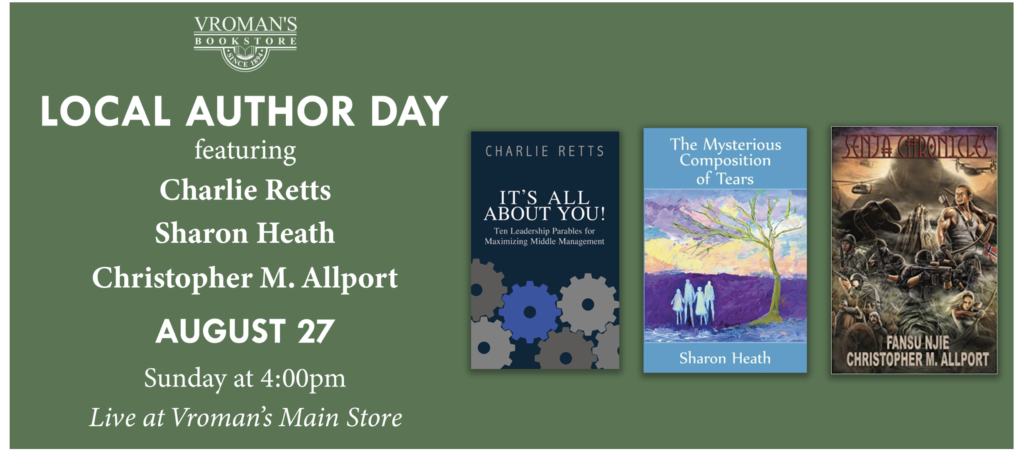
C.G. Jung famously wrote, “One does not become enlightened by imagining figures of light, but by making the darkness conscious.” And if ever there was a time to shine what Joni Mitchell called our “little lights” into the darkness, this is it.
It seems that at any given moment, half our world is awash in unwelcome torrents of water, the other half suffering stifling heat and fire. In Earth’s vast ecosystem, everywhere is downwind, everything is interconnected. The butterfly effect ensures that we all suffer from such large environmental threats as deforestation of the Amazon and such seemingly small acts as individuals killing bee colonies when using Monsanto’s herbicide Roundup to rid their gardens of weeds.
In the U.S., plumes of smoke from Canadian wildfires have forced masks onto faces of people who’d months ago abandoned using them for COVID-19. Record-breaking unhealthy air quality has stretched from Montana to Michigan, the Dakotas to Illinois. Manhattan and D.C. have been blanketed with a smothering, bitter orange haze. Catastrophic flooding has wreaked havoc on vast swathes of the Northeast. Today, Phoenix, Arizona hit 117 degrees. Evidence is everywhere that we’ve truly entered the Anthropocene geological epoch, with human impact on the life of our planet a dominant force for good or ill, with a heavier thumbprint on the more dolorous end of the spectrum.
Fear for the future of our species and for my grandchildren’s generation has kept me up more nights than I can count, and solastalgia—grief over damage and danger to our home planet—has translated itself into a leitmotif in my writing, albeit sometimes served up with a whimsical twist.
For me, Mark Nepo expresses some of the feeling tone of our collective solastalgia in these lines from his poem “Adrift:”
In the very center, under
it all, what we have that no one can take
away and all that we’ve lost face each other.
It is there that I’m adrift, feeling punctured
by a holiness that exists inside everything.
I am so sad and everything is beautiful.
Or as my fictional protagonist Fleur Robins puts it in my latest novel: “I’m stricken with wonder. Surprise slays me. I feel a longing so profound it’s like a cosmic flu.“
Over the course of four books, Fleur’s obsession with the void has led her to sound an increasingly urgent alarm over the climate emergency, striving with her physics team to expand theoretical boundaries and develop practical means to avert utter calamity. In her most recent adventure, The Mysterious Composition of Tears, Fleur travels into deep space to consult with some of our wisest and most brilliant ancestors—among them the zany, if disembodied spirits of Wolfgang Pauli, Albert Einstein, and Richard Feynman, as well as a chorus of scarfed and flowing women whispering ancient truths of our rootedness in the natural world. Stuck at the event horizon of a black hole named Unicorn, Fleur bears witness from afar to the love dramas of her teenaged offspring Callay and Wolf, weeps over heartbreaking waves of climate refugees, and is stirred by surprising developments in post-COVID-19 culture. It’s a time of simultaneous destruction and creativity, one that sees the collapse of the internet, the emergence of new forms of communication via implanted volumetric display devices, and actual conversations by gifted young people with animals, stones, and trees. Not to mention vividly beautiful Shimmers appearing to the discerning few, hinting at a larger mystery at play that Fleur herself will be called to unlock. The Mysterious Composition of Tears is a tale of humanity’s dark despair and profound love, our capacity for cruelty and spiritual luminosity, and the nuanced interweave of our own fates with the dance of the cosmos itself.
As Fleur engages with energies underlying light, gravity, and matter, she learns something of the wisdom of the heart that might save us more surely than the latest versions of AI that aim to technologically improve upon the gifts of mind, body, and soul. In the Science and Environmental Health Networker, environmental leader Carolyn Raffenspberger has written, “The Mysterious Composition of Tears is a sci-fi/magical realism story set in the future that has physicists grappling with climate change. Heath incorporated…work on the precautionary principle in this fictional setting by describing scientists taking seriously the possible negative consequences of extremely novel technologies. I wonder when some future scientist might read her novel and change her approach to incorporate precaution. Medicine!”
Writing this first book of the planned series The Further Adventures of Fleur has given me a chance to shine my own little light into some of the darkness of our times, as well as some shadowy places in my own soul. Inevitably, Fleur lifts my heart. She and I share the hope that her story offers our readers a bit of helpful medicine, too.
On Sunday, August 27th, at 4 p.m., I’ll be reading from The Mysterious Composition of Tears at Southern California’s oldest and largest independent bookstore, the marvelous Vroman’s Bookstore, located at 695 E. Colorado Blvd., Pasadena.
I’d love to see you there!

💧🌳 🦋